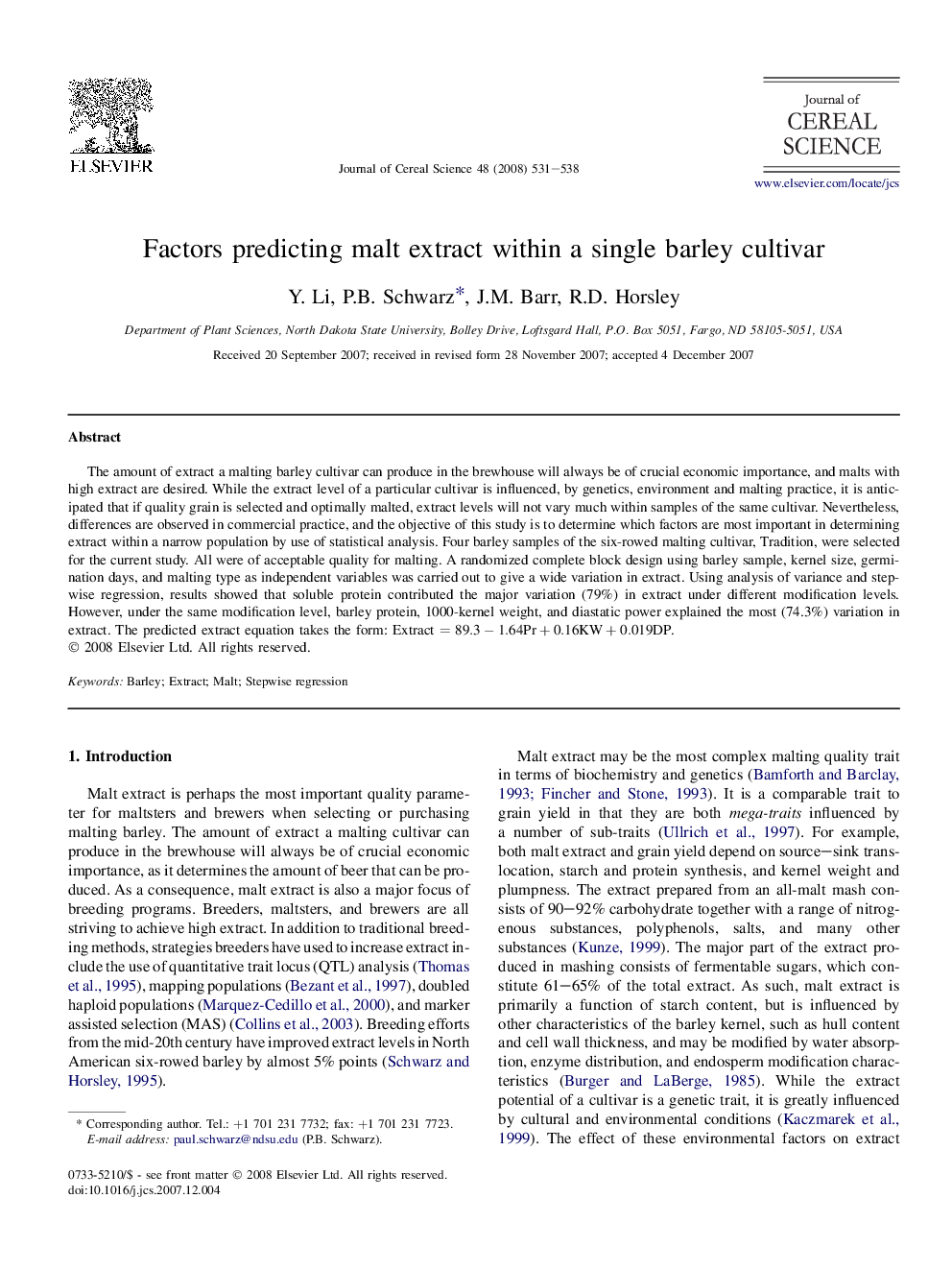| Article ID | Journal | Published Year | Pages | File Type |
|---|---|---|---|---|
| 4516796 | Journal of Cereal Science | 2008 | 8 Pages |
The amount of extract a malting barley cultivar can produce in the brewhouse will always be of crucial economic importance, and malts with high extract are desired. While the extract level of a particular cultivar is influenced, by genetics, environment and malting practice, it is anticipated that if quality grain is selected and optimally malted, extract levels will not vary much within samples of the same cultivar. Nevertheless, differences are observed in commercial practice, and the objective of this study is to determine which factors are most important in determining extract within a narrow population by use of statistical analysis. Four barley samples of the six-rowed malting cultivar, Tradition, were selected for the current study. All were of acceptable quality for malting. A randomized complete block design using barley sample, kernel size, germination days, and malting type as independent variables was carried out to give a wide variation in extract. Using analysis of variance and stepwise regression, results showed that soluble protein contributed the major variation (79%) in extract under different modification levels. However, under the same modification level, barley protein, 1000-kernel weight, and diastatic power explained the most (74.3%) variation in extract. The predicted extract equation takes the form: Extract=89.3−1.64Pr+0.16KW+0.019DPExtract=89.3−1.64Pr+0.16KW+0.019DP.
